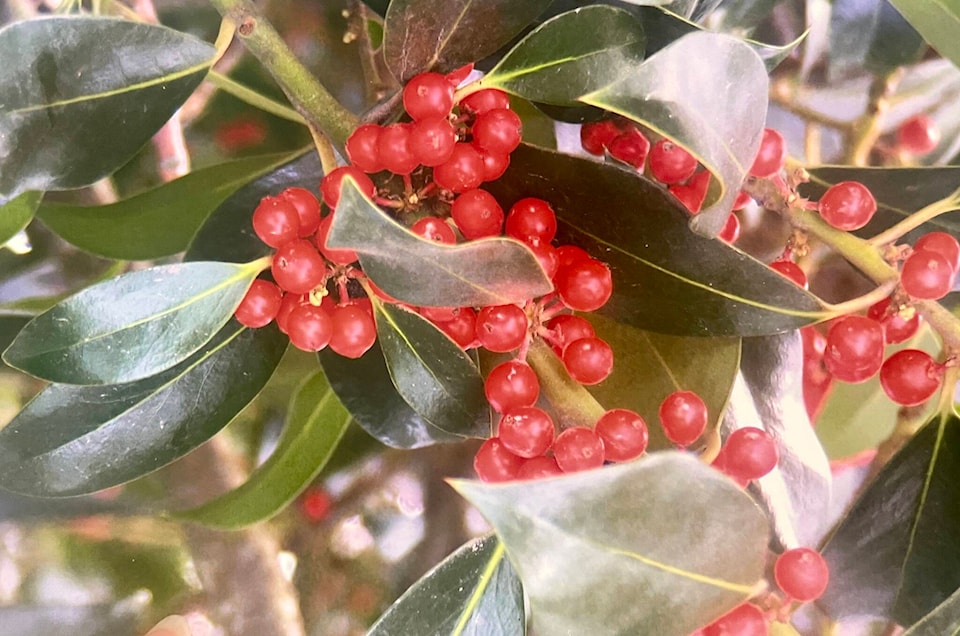By Ed McMackin, a biologist by training and a naturalist by nature
A lot of different activities are engaged at Christmas time and in the holiday winter season.
There are special activities and special things like cards and notes with reproductions of pine boughs laden with snow, pictures of chickadee, English robins or titmice (if produced in Great Britain) on the boughs or on the ground under a feeder. Pictures also depict twigs of holly laden with bright red berries and bright green leaves.
People make wreaths of evergreen boughs, containing pine cones, colorful berries, and holly leaves. Stems of snowberries are sometimes used in wreaths, if it is kept out side, as inside the soft white berries will shrivel. And of course the poisonous poinsetta also enters the holiday scene. It’s bracts turn a crimson red, replacing the preceding green. The actual flower is a small center among the bracts.
Some people want more than a few berries, bows and boughs and imitation birdies in a wreath - they want a whole tree! They’ll go as far as to cut down a larger tree to get the top to use for a Christmas tree. Douglas Fir and Pine trees fall prey to such predators. And, then I am not sure which is more environmentally friendly to purchase a manufactured tree or use a wild one. Perhaps it is just better, if you just have to have a real tree, to get one that is grown commercially, recycling it at the “mulch makers”.
An alternative, perhaps the best yet, is to decorate a small tree, evergreen or deciduous, like birch, that is growing in your yard, or decorate an elderly neighbour’s tree.
Some people are most satisfied with enjoying trees right where they’re at, bending down in the fresh white snow, some, like the pines
with intricately engineered cones, or pyracantha shrubs with their orange berries, or mountain ash (rowan trees) laden with bunches of berries, each topped with a cap of snow.
I was once acquainted with a couple who had a holly tree in their yard and it had berries on it too. Now, for a holly tree to have berries, it must be a female tree. And, one more thing, there must be
a male tree nearby to help make berries. So, guess what! They had two trees on the front of the lot, one that would produce bright red berries and shiny green leaves, and one that just produced bright green, leaves.
Both male and female holly trees have smooth green leaves. The leaves are also leathery and evergreen, It’s a good example of a broad-leaf evergreen. The leaves also have pointy edges and
thought, by some to be, spiny but they are only prickly hence the label “prickly holly.”
In the Kootenay Lake Region there’s a low-growing species of shrub that is sometimes called “holly”, but actually that is the native “Oregon Grape”.
It has holly-like leaves but vivid blue berries while the introduced holly has bright red berries and is grown as an ornamental.
The proud owners of this pair of holly trees were happy to show the trees to anyone who would take an interest. Their names were Ken, (now deceased) and coincidentally, guess what, “Holly”.
So like this couple, be sure to share your winter blessings with others. It may not be a holly tree, but just as well!
